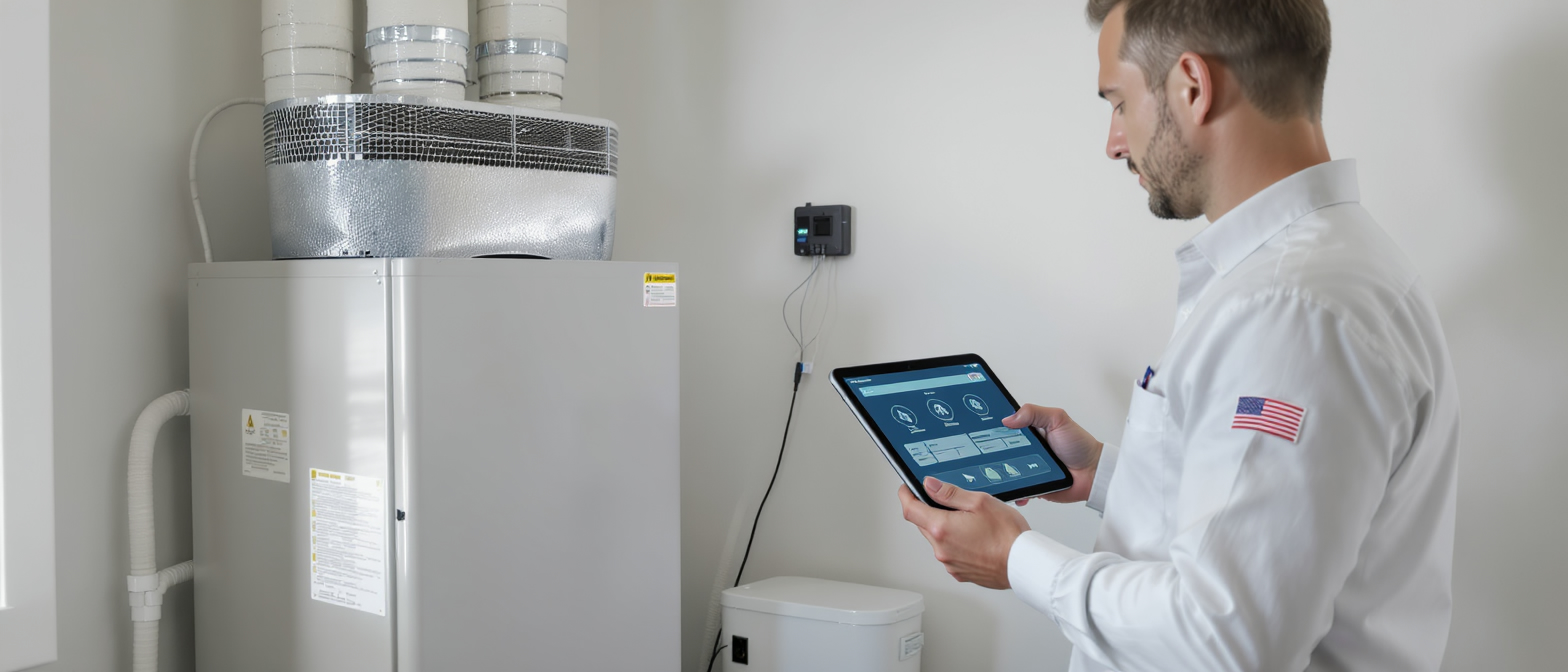What Is BACnet for Residential HVAC

What homeowners need to know about BACnet
BACnet is an open communication protocol designed so heating, cooling, and ventilation equipment can talk to each other and to a central controller. In residential HVAC, BACnet lets thermostats, heat pumps, mini-splits, air handlers, ERV/HRV units, sensors, and dampers share data and follow common schedules and rules. Instead of a single smart thermostat making limited decisions, BACnet enables a coordinated system that can manage multiple zones, devices, and priorities in one home.
BACnet is widely used in commercial buildings, but it’s increasingly valuable for large residences, estates, multi-dwelling properties, or homes with advanced systems like VRF mini-splits, zoning, and dedicated ventilation. It supports trending, alarms, and detailed diagnostics that typical residential controls may not expose.
How BACnet works in a house
- Networks: BACnet runs over BACnet MS/TP (twisted pair RS‑485) and BACnet/IP (Ethernet or Wi‑Fi). Many homes mix both with small gateways.
- Objects and points: Every controllable feature (fan speed, discharge air temp, damper position, CO2 reading) is a "point." BACnet names and organizes these points so a controller can read/write them consistently.
- Controllers and gateways: A compact BACnet controller coordinates logic, scheduling, and alarms. Gateways integrate mini-splits or VRF systems so each indoor unit appears as standard BACnet points.
- Visualization: A simple dashboard can show real-time values, trend energy and temperatures, and push alerts if limits are exceeded.
Why homeowners use BACnet
- Multi-zone comfort: Coordinate several air handlers or mini-splits so rooms stay in range without fighting each other.
- Indoor air quality (IAQ): Tie ERV/HRV, filtration, and sensors (PM2.5, CO2, VOCs) into rules that boost ventilation or fan speed during events.
- Energy optimization: Use schedules, setpoint resets, and utility time-of-use awareness to reduce energy spend while maintaining comfort.
- VRF and mini-split integration: Many ductless/VRF systems become BACnet-ready with a proper gateway.
- Remote visibility: Trend logs and alarms help detect issues early, reducing downtime and surprise bills.
BACnet vs. a single smart thermostat
A smart thermostat is great for one system and simple scheduling. BACnet shines when you have multiple systems, zones, or specialized IAQ and ventilation goals. It is vendor-agnostic at the protocol level, supports deeper data access, and scales from a few rooms to a complex property. Many mini-splits and VRF units require BACnet gateways to unlock full control and diagnostics.
When BACnet makes sense at home
- Large custom homes, estates, or multi-structure properties (main house, ADU, studio).
- Multiple air handlers, VRF/mini-split networks, or a mix of ducted and ductless systems.
- Heat pump plus ERV/HRV ventilation with IAQ sensors and motorized dampers.
- Precise zoning for comfort-sensitive spaces like nurseries, home studios, wine rooms, or server closets.
- Owners who want detailed monitoring, trending, and data-driven maintenance.
Safety, codes, and insurance considerations
Integrating BACnet touches high- and low-voltage wiring, controls programming, and sometimes refrigerant system behavior. Incorrect wiring, logic, or addressing can lead to equipment damage or unsafe operation. In many jurisdictions, permits, licensed installers, and documented commissioning are required. Insurance and warranty providers often expect qualified professionals to perform the work and keep commissioning records.
Typical residential BACnet stack
- Assessment and design: Map each device, choose BACnet/IP or MS/TP, and define points and sequences for zoning, ventilation, and IAQ.
- Gateways and controls: Add gateways for VRF/mini-splits and select a right-sized controller for schedules, alarms, and logic.
- Network topology: Plan wiring, addressing, and device limits to avoid collisions and latency.
- Programming and graphics: Build sequences, dashboards, trend logs, and notifications with clear naming.
- Commissioning and documentation: Verify every point, alarm, and fallback mode; record results for code and insurance compliance.
- Cybersecurity basics: Segment the HVAC network, use strong credentials, and consider BACnet/SC or secure VPN for remote access.
Costs and complexity
BACnet hardware such as gateways, controllers, sensors, and dampers adds material cost, and expert programming/commissioning is essential. Expect more planning up front in exchange for better comfort, IAQ, diagnostics, and scalability over the life of the home.
Real-world examples
- Time-of-use automation: During high-rate utility windows, the system pre-conditions spaces and eases loads while maintaining comfort.
- IAQ-driven ventilation: When CO2 or PM2.5 rises, the controller boosts ERV/HRV and filtration to restore healthy air.
- Zoned VRF mini-splits: Each zone follows occupancy and schedule, with setbacks and coordinated defrost behavior.
About #1 AC Guys
#1 AC Guys is a fourth-generation family of engineers in Southern California with 80+ years of engineering experience. Our mission is healthy air at home for a healthy life. We are trained at the manufacturers’ facilities of Fujitsu (Japan), Mitsubishi Elektrik (Thailand), Midea (China), Gree (China), and Hier (China). We specialize in commercial and residential projects, especially large and complex properties that benefit from BACnet, VRF, and advanced IAQ controls.
Service area: Los Angeles County and surrounding regions including Orange County, Ventura County, and Western Riverside County. Typical cities include Los Angeles, Long Beach, Glendale, Pasadena, Santa Monica, Burbank, Anaheim, Irvine, Costa Mesa, Newport Beach, Santa Ana, Huntington Beach, Thousand Oaks, Oxnard, Ventura, Simi Valley, Camarillo, Riverside (western), Corona, Temecula, and Murrieta.
Key takeaways
- BACnet is the open language that lets residential HVAC devices coordinate for comfort, IAQ, and efficiency.
- It’s ideal for multi-zone, VRF/mini-split, and ventilation-rich homes needing deeper control and diagnostics.
- Proper design, programming, and commissioning by qualified professionals are essential for safety, compliance, and insurance expectations.
Yasmine is currently an Associate Professor of Psychology at Mount Saint Mary College where she teaches a wide array of courses in the Psychology department. She is a Fulbright Scholar spent a year working at the Medical Decision Making Center at Ono Academic College in Israel.
Yet, as many higher education professionals can surely attest to, I have also witnessed the other challenge in group decision making. In academia, engaging in critical dissent is encouraged (reviewed by Jetten & Hornsey, 2014), and while this is a fine attribute, practically,
